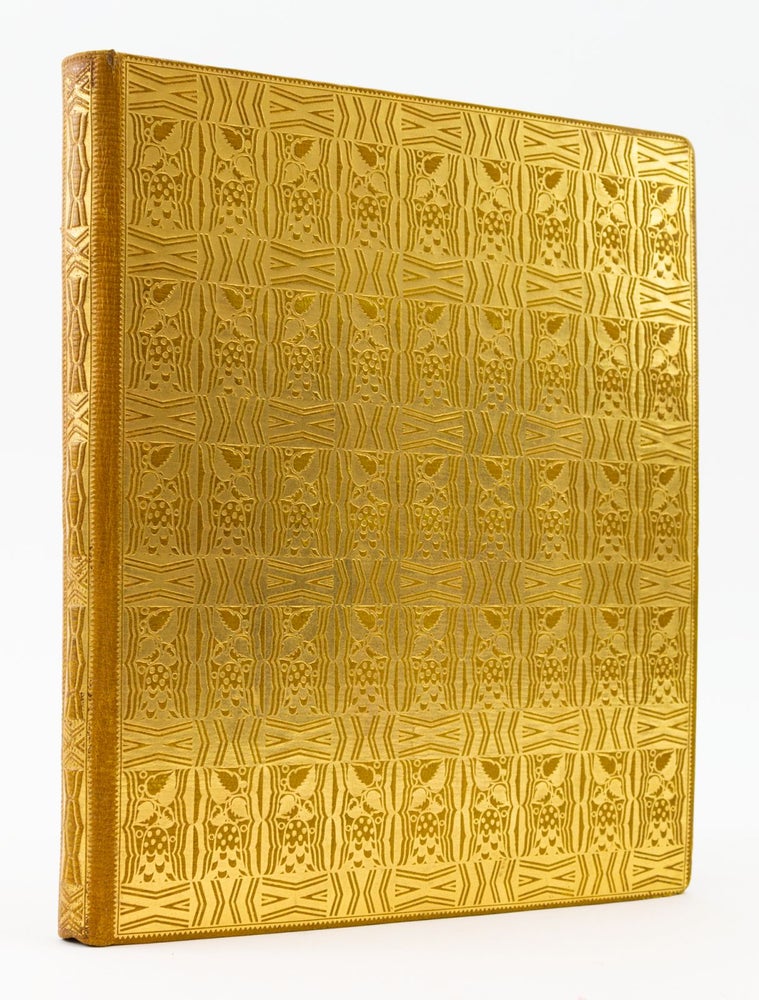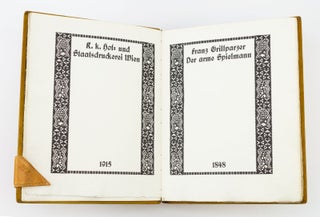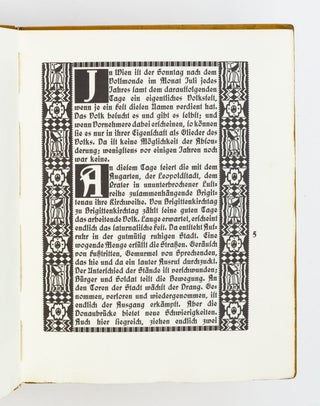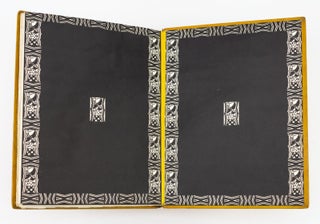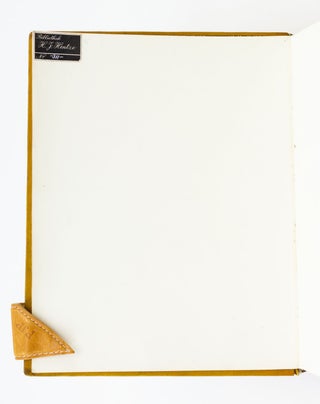DER ARME SPIELMANN.
(Wien [Vienna]: K. K. Hof- und Staatsdruckerei, 1915). 263 x 202 mm. (10 1/4 x 8"). 80 pp., [1] leaf.Typography by Viktor Mader. Book design by Josef Hoffmann. No. 23 OF 50 SPECIAL NUMBERED COPIES printed on mould made paper (Fabriano) and bound in full leather, from a total edition of 520.
SUPERB CITRON MOROCCO, RESPLENDENTLY GILT, BY WIENER WERKSTÄTTE TO A DESIGN BY JOSEF HOFFMANN (as stated in colophon), covers with repeated geometric gilt-stamped design echoing the graphics used in the book, flat spine with similar tooling, black endpapers using recurrent design motif (in white) in frame and centerpiece, publisher's yellow cloth hinges, top edge gilt, other edges untrimmed. Title pages and text within black frames of a geometric/floral design by Hoffmann. Verso of front free endpaper with book label of Bibliothek H. J. Hintze. ◆Backstrip lightly bumped at foot, trivial loss of gilt at top of spine, corners negligibly rubbed, but A VERY FINE COPY, entirely clean, fresh, and bright internally, in a binding dazzling with gilt and showing only the most superficial signs of use.
This book is a beautiful example of the "Gesamtkunstwerk," or "total work of art," that the artists and artisans of the Wiener Werkstätte strove to create. Founded by architect Josef Hoffmann (1870-1956) and graphic designer Koloman Moser (1868-1918), this decorative arts movement sought to combine traditional hand craftsmanship with the avant-garde aesthetic of the Vienna Secession school of modern art, which brought Art Nouveau to Austria and Germany. The very geometric, rectilinear designs of Scottish architect Charles Rennie Mackintosh and the ideals and designs of the British Arts & Crafts Movement were major influences that are very much in evidence here. The quality of paper, the typeface and printing, and the highly decorated binding are worthy of the latter, while the graphic designs used in the text decorations and on the binding evoke Mackintosh. In addition to buildings, the Wiener Werkstätte artists and craftsmen--like the members of the English Arts & Crafts movement--designed utilitarian items like furniture, glassware, ceramics, textiles, and books, all of which were intended to be both useful and beautiful. In 1903 they set up a three-story workshop in Vienna that included a bindery, which Hoffmann felt was necessary if the whole book was to be seen as a work of art--as the Gesamtkunstwerk ideal demanded. Our particular production contains the beloved Viennese novella, "The Poor Fiddler" (1848), one of two prose works by Grillparzer (1791-1872), Austria's greatest 19th century dramatist. The fiddler of the title is Jakob, written off by his civil servant father as a worthless would-be musician. Despite having little talent, Jakob finds great joy and solace in music, albeit with little worldly success. Naïve to the point of foolishness, he allows himself to be cheated of his inheritance when his father dies. The woman he loved, unwilling to live with him in poverty, marries a successful butcher, though her heart remains with Jakob. When they meet years later, Jakob teaches her young son--who is named for him--to play the violin, and when the fiddler dies rescuing children from a flood, she cherishes his old violin. The story's contrast between artistic striving--and the inner fulfillment it can bring--with the crass materialism of society is an apt choice for a workshop that sought to produce useful items artistically. The Wiener Werkstätte created a very vibrant package for this bourgeois vs. bohemian story. Deluxe copies of this work are uncommon on the market and sell consistently for substantial amounts. (ST19093)
Price: $12,500.00

